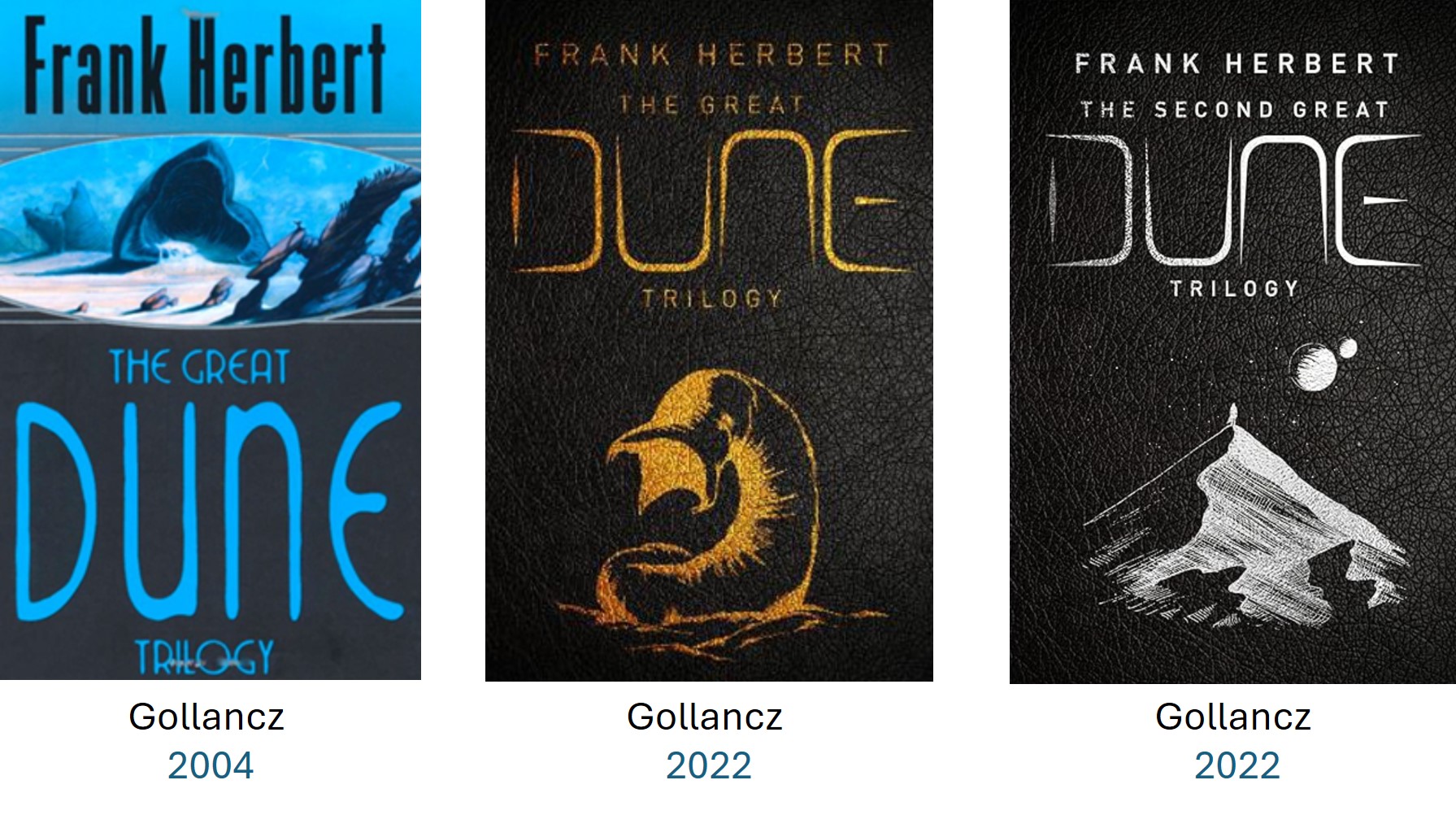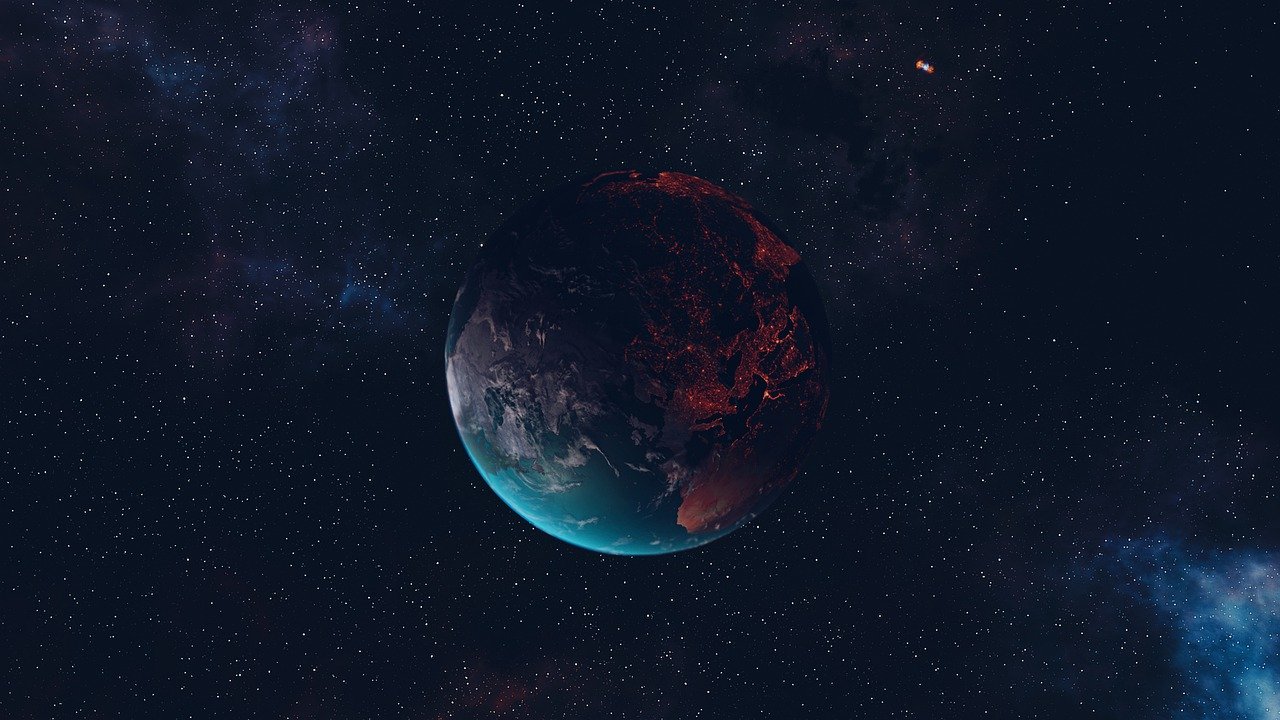



Frank Herbert's Dune novels - Publication History
The Dune novels by Frank Herbert are among my favourite novels in all of SF, offering a deeper and more realised future universe than any other connected series I can think of. The range of ideas and concepts Herbert comes up with, and the density of plotting, thought and philosophy they contain is truly astonishing. Many SF fans at some point look into obtaining some first editions, or try and build a set of books from an edition that had consistent art or design. I know I've done this, and my collection of Dune novels is shown under the Frank Herbert author tab.
It should be noted that the total publication history if the Dune books amounts to so many editions and version, it would be nigh on impossible to summarise them all here. However some effort has been made to provide a comprehensive overview of the key editions.
Dune (1965)
To start at the proper beginning with Dune, we must go back to December 1963, when Frank Herbert serialized the first part of what would, in time, become Dune. This first serialization, in Analog Science Fact & Science Fiction magazine from December '63 through February '64 , was published as Dune World.
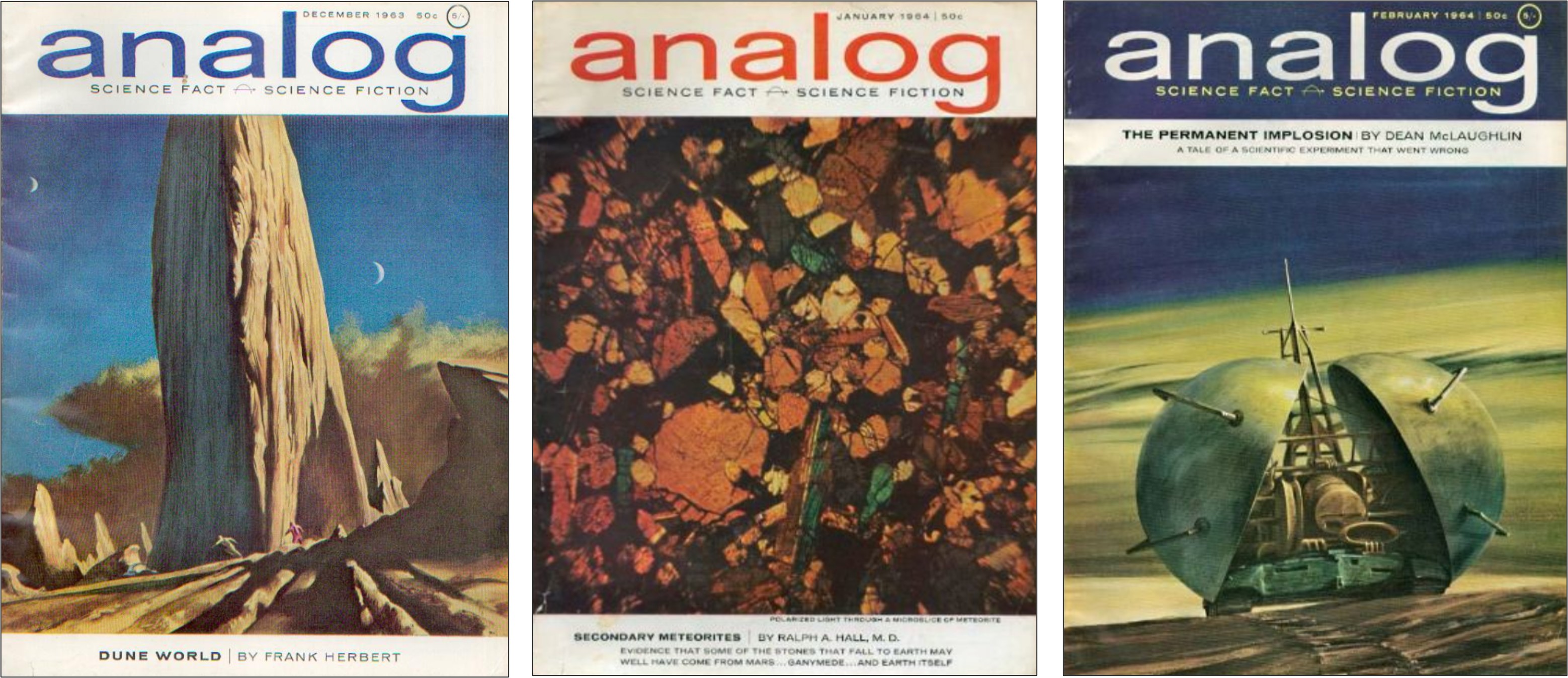
In 1965, Herbert returned to the Dune world, with the serialization of Prophet of Dune, across 5 issues of Analog, from January through May of that year. Prophet of Dune was the cover story in both the January and March issues of Analog, with famous illustrations by John Schoenherr, which would later be reused in book editions.

The first book edition of Dune was therefore a 'fix-up' of the two serials from Analog magazine. The first edition was published by Chilton in December 1965, and reused the Schoenherr artwork from the January 1965 magazine. The true first edition, first printing, had blue cloth boards, and is now extremely valuable - indeed, it's one of the most expensive SF first editions you'll ever see advertised.

The Dune first edition, first printing (on the left) had blue cloth boards, no ISBN on the copyright page, and the price $5.95 on the top of the front flyleaf. The cover shows more of the Schoenherr artwork than subsequent printings. This edition typically costs above USD $10,000 at auction, and signed copies will be much higher.
The book club first edition (on the right) was published in 1966 and it, as well as subsequent non-book club printings of this edition by Chilton are very similar to the first edition first printing, but had red cloth boards, an ISBN number, states it is a book club edition on the inside flyleaf, and has closer cropped artwork. This early edition can typically be sourced for between USD $300-$600.
Prior to the publication of any sequels in the series, there were several further editions published of the original novel, including the first publication in the UK in 1966 (a hardback by Gollancz) and paperback editions on both sides of the Atlantic in '67 and '68. The Ace Books paperback featured artwork by John Schoenherr once again, while the British NEL edition sported the now classic artwork of Bruce Pennington.

Dune Messiah (1969)
As with Dune, Herbert's first sequel to the original story, Dune Messiah, was serialized, this time in Galaxy Magazine, between July and November 1969.

The first hardback edition of Dune Messiah was published by Putnum in 1969, with artwork by Jack Gaughan. The same artwork was reused in the US first paperback (Berkley Medallion, 1970). Dune Messiah was first published in the UK as part of the Gollancz SF series of that time (without artwork), though the 1972 paperback in the UK continued with art from Bruce Pennington. First printings of the Putnum first edition are now very valuable (though not as expensive as Dune). As Chilton did with Dune, Putnum released an early (second printing) book club edition of the first edition hardback, which is also sought after, and easier to acquire. The book club version states it is such on the inside flyleaf.
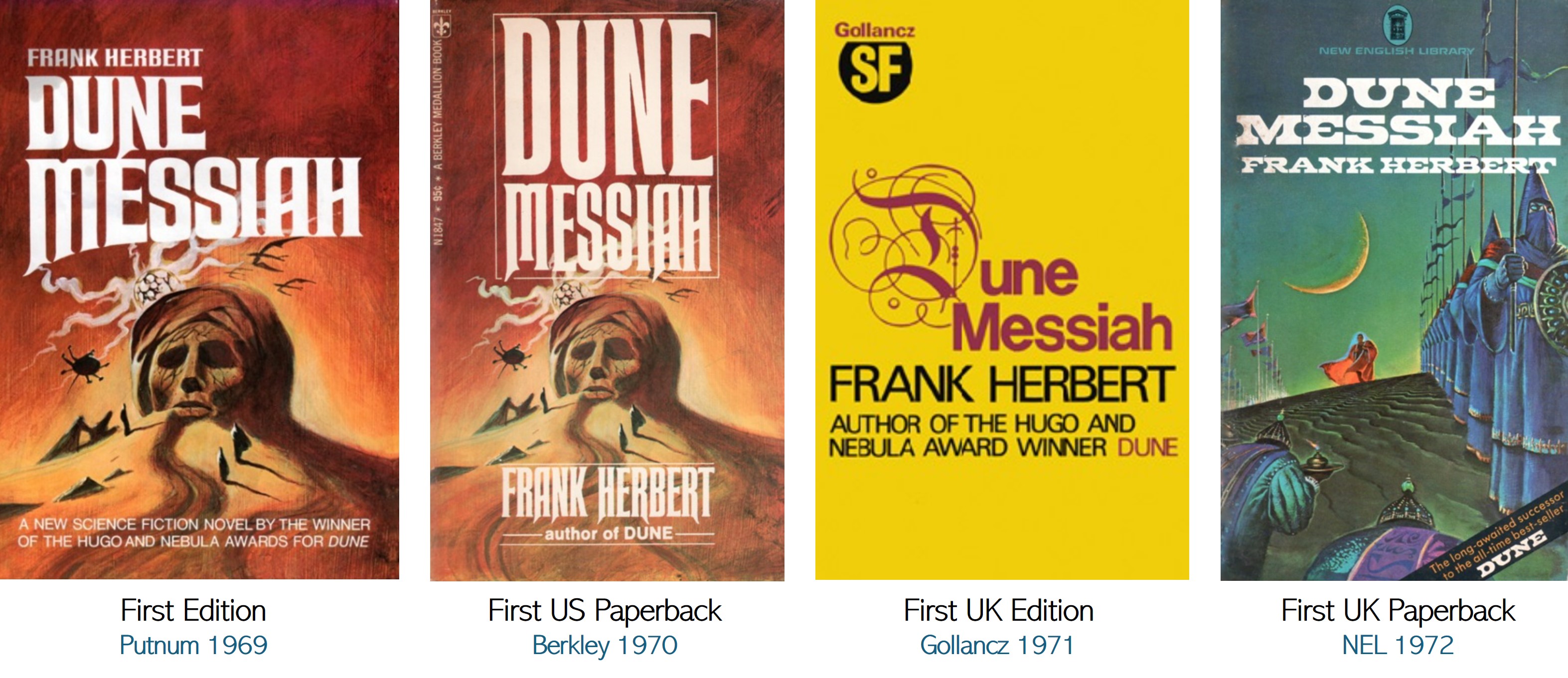
Children of Dune (1976)
Herbert stuck with the tried-and-tested approach still common in the 1970's, and serialized Children of Dune before book publication. In this instance, the story was published in Analog magazine, between January and April, 1976.


Hardback book publication followed swiftly, with the Berkley/Putnum first edition in late 1976 in the US, and by Gollancz in the UK in the same year.
God Emperor of Dune (1981)
God Emperor of Dune, first published in 1981, was the first volume in the series not to be serialized, with the first edition published by Putnum in the US, with artwork by Brad Holland, and less than a month later by Gollancz in the UK, with artwork still by Bruce Pennington. The US Putnum edition was also released in first edition without a dust jacket as a plain black volume, signed and numbered by Herbert, and limited to 750 copies.
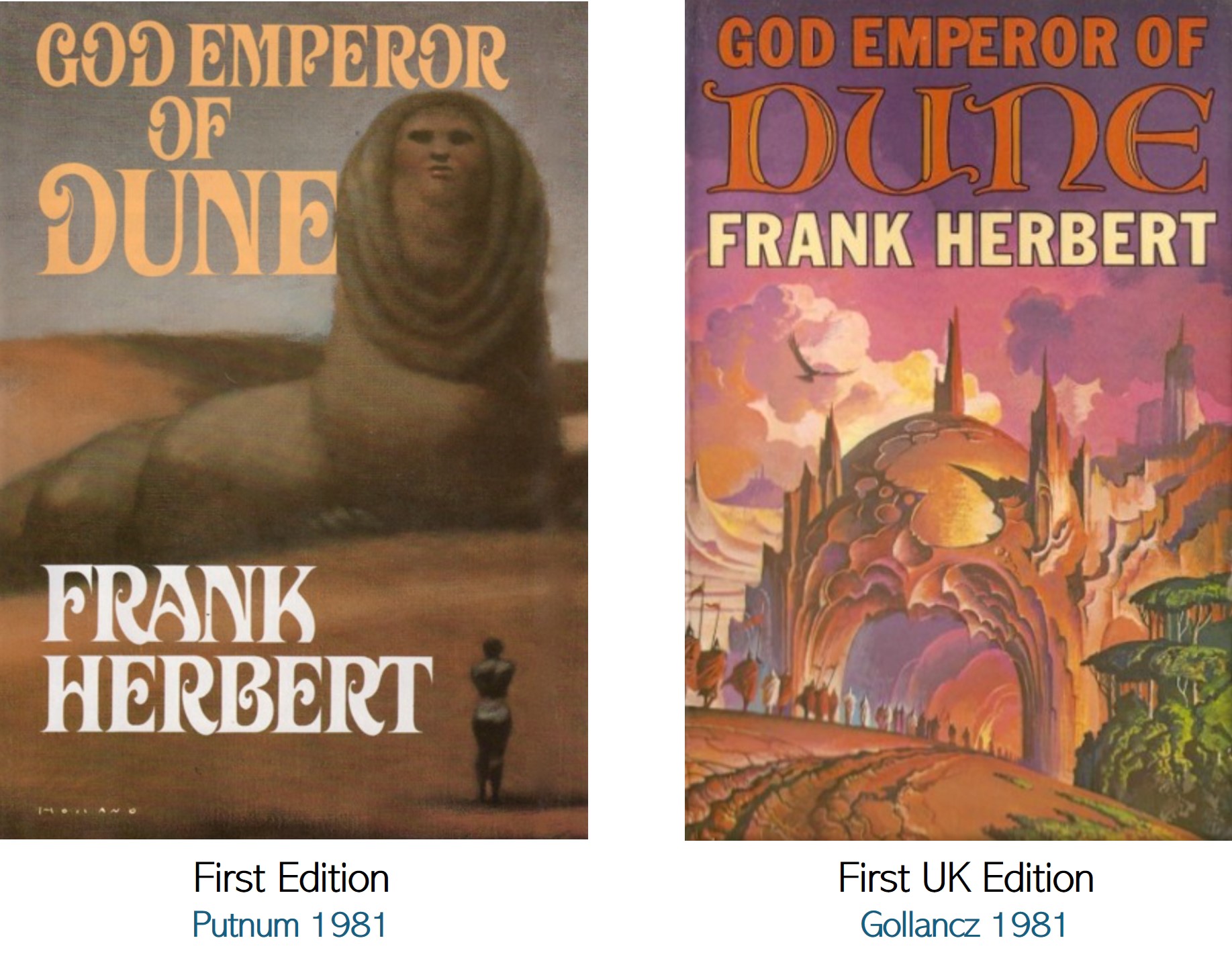
Heretics of Dune (1984) & Chapter House Dune (1985)
The next two books make up the final volumes in Frank Herbert's Dune series. They are considered together here as they were released close together in 1985 and 1986, and also because they comprise two parts of a single cohesive storyline, set 1500 years after God Emperor.
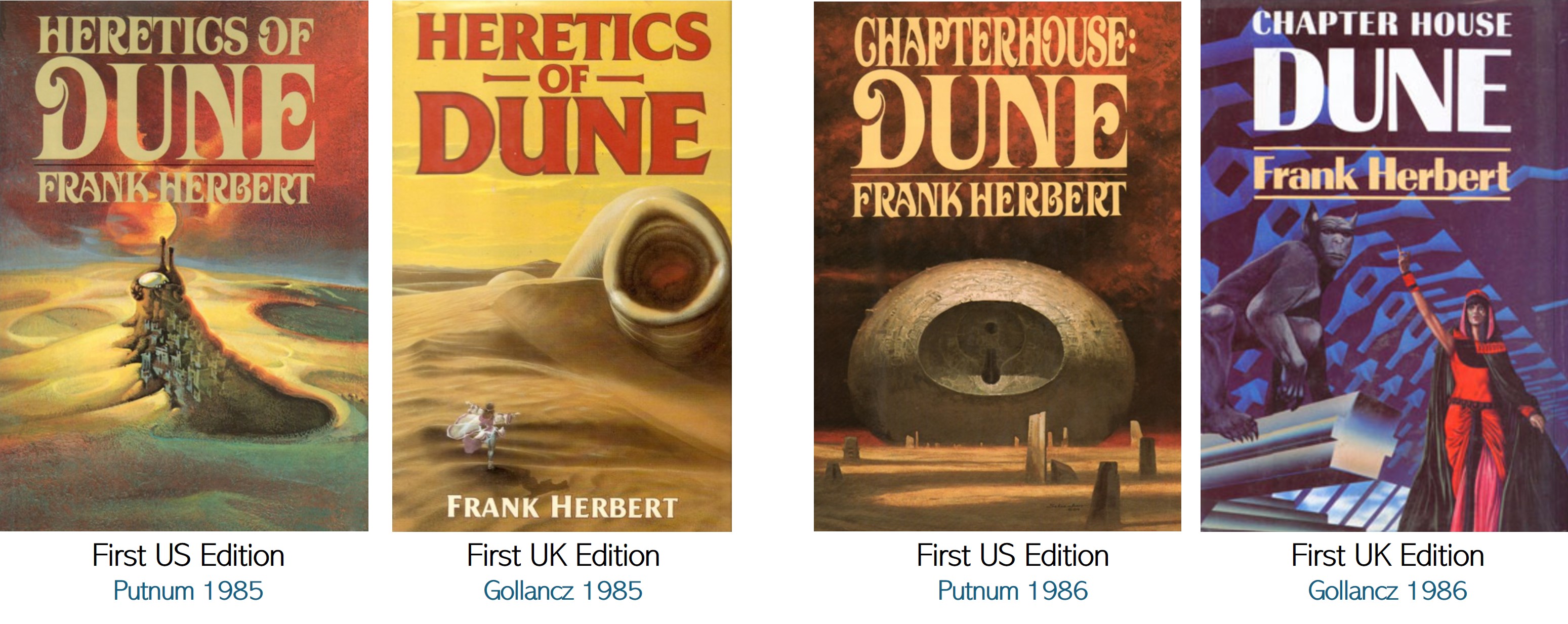
Dune Series Set Editions & Collections
Following publication of Children of Dune, bringing the series to what was then considered a complete trilogy, publishers started to release editions of all three books with consistent artwork. Indeed, the expansion into a trilogy had been expected since about 1975, and as such both Berkley in the US, and NEL in the UK had been publishing the first two volumes Dune and Dune Messiah since 1975 with consistent styles for a few years, and then added the third book to make complete trilogy sets. As Herbert published the fourth, fifth and sixth voluems, these were either added to existing trilogy editions, or formed new editions over the coming years.
New English Library UK Edition (1968-1981)
The NEL paperback of Dune was published in 1968 in the UK and was the first UK paperback of that book, featuring artwork by Bruce Pennington. NEL stuck with the same format for the next three sequels, through to 1981's God Emperor of Dune, all with the same consistent style and classic Pennington art. NEL switched style and format around 1984, when David Lynch released his film of Dune (they released a film tie-in edition with the film's poster as the cover in '84, before moving on to the 1985-86 edition shown below.
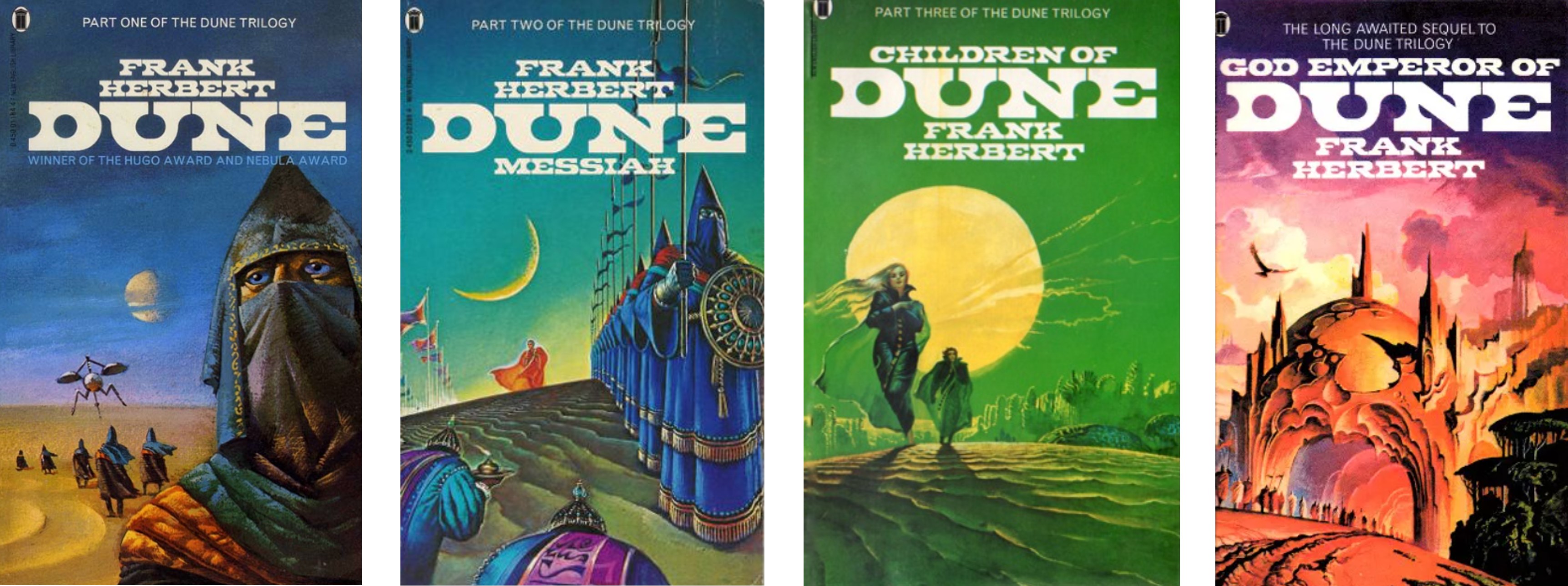
Berkley US Paperback Edition (1975-1986)
Eventually comprising all six books, Dune was first published by Berkley in 1975, along with Dune Messiah. Children of Dune, and God Emperor of Dune followed in 1976 and 1984 respectively. These first four volumes have artwork by Vincent Di Fate. The final two books were added to the lineup in the same style, as they were released in '85 and '86, but with artwork by John Schoenherr.

Gollancz UK Hardback Edition (1984)
This edition released by Gollancz, who published all the UK HB first editions, was released to tie-in with the David Lynch 1984 film, in that year. All four books availabale at that time sport the film's poster art.
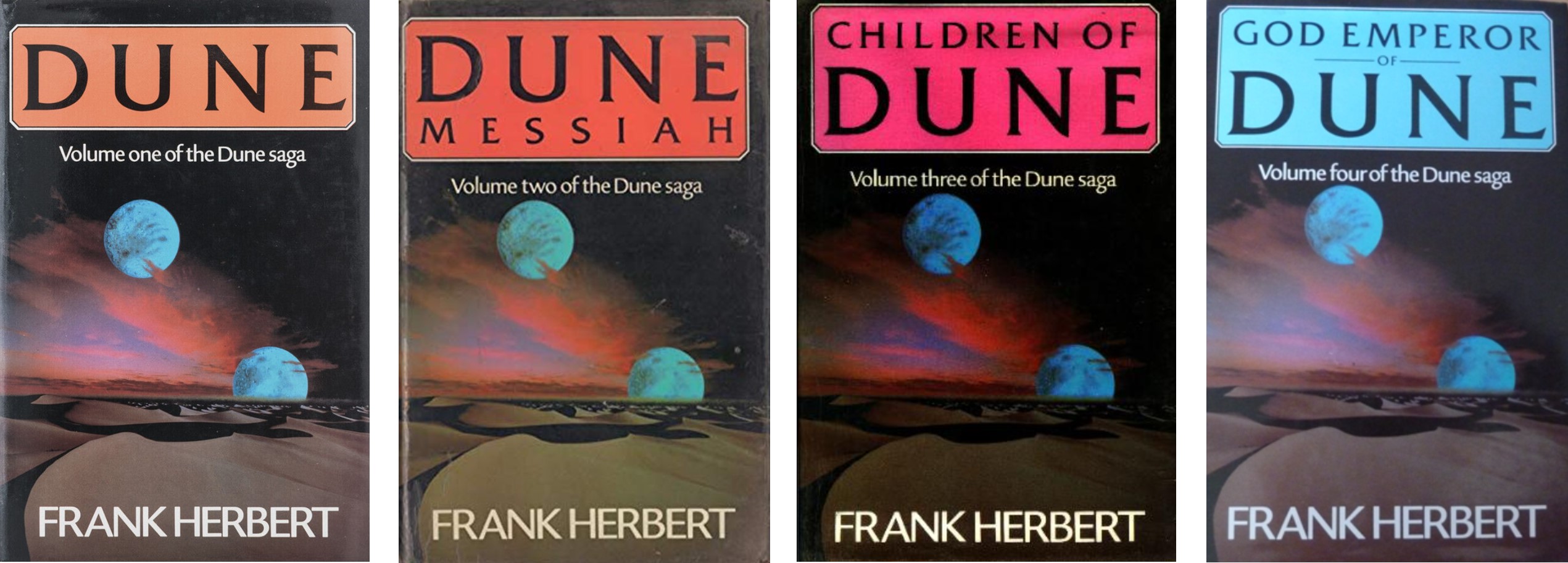
Berkley US Paperback Edition (1985-1986)
Berkley revamped their publication of the Duneseries in 1985, though it actually overlapped with the edition presented above. The striking bold artwork was by Frederic Marvin. This was a series where the covers can be placed together to form a single piece of connected artwork.

New English Library UK Paperback Edition (1985-1986)
NEL revamped the UK paperbacks of the Dune novels, starting with the first four books in 1984. These sported artwork by Gerry Grace, and the first five books form a long panel artwork comprised of the the back, spine and front of the books, when placed together (see graphic below), which was rather cool.


Turtleback Books US Hardback Edition (1994); reprinted by Ace Books
A hardback imprint originally by Turtleback Books, and then later reprinted by Ace Books (notably in 2008). These are quite handsome volumes.

Ace Books US Paperbacks (1994)
These were the first Ace editions in the US since their original Dune first edition paperback released in 1967. They re-used artwork from several sources, but mostly from the Berkley paperbacks from of '75-'86.

New English Library UK Paperback Edition (1999)
Another change in style from NEL in the UK, featuring cropped images from Gerry Grace's art from the '85-86 edition.

New English Library UK Paperback Edition (2003)
These book are slightly strangely arranged, as the first three books were provided as a trilogy, though Children of Dune was also offered as a standalone, along with books four to six. Artwork was by Robert Nicholls.

Hodder & Staunton UK Paperback Edition (2008)
This edition by a new UK publisher included only the first two books in the series. The artwork seemed to have little to do with the each book, and they're not my favourites (though I did own and read this Dune edition for some reason at one time)

Hodder & Staunton UK Paperback Edition (2015)
A graphic artwork set from UK publisher, Hodder Paperbacks, with covers by Francis O'Connell.

Ace Books US Paperback Edition (2019)
Continuing the more graphical approach used by Hodder in the UK, Ace followed suit with this paperback set. They are less to my taste, but have some style. Art by Jim Tierney.

Gollancz UK Hardback Edition (2021-2023)
Only the two books in this hardback set yet, but more may be on their way.

Ace Books US Hardback Edition (2023)
These are beautifully produced hardbacks. Only covering the original trilogy to date, these look quite 'collectable' and are superior quality.
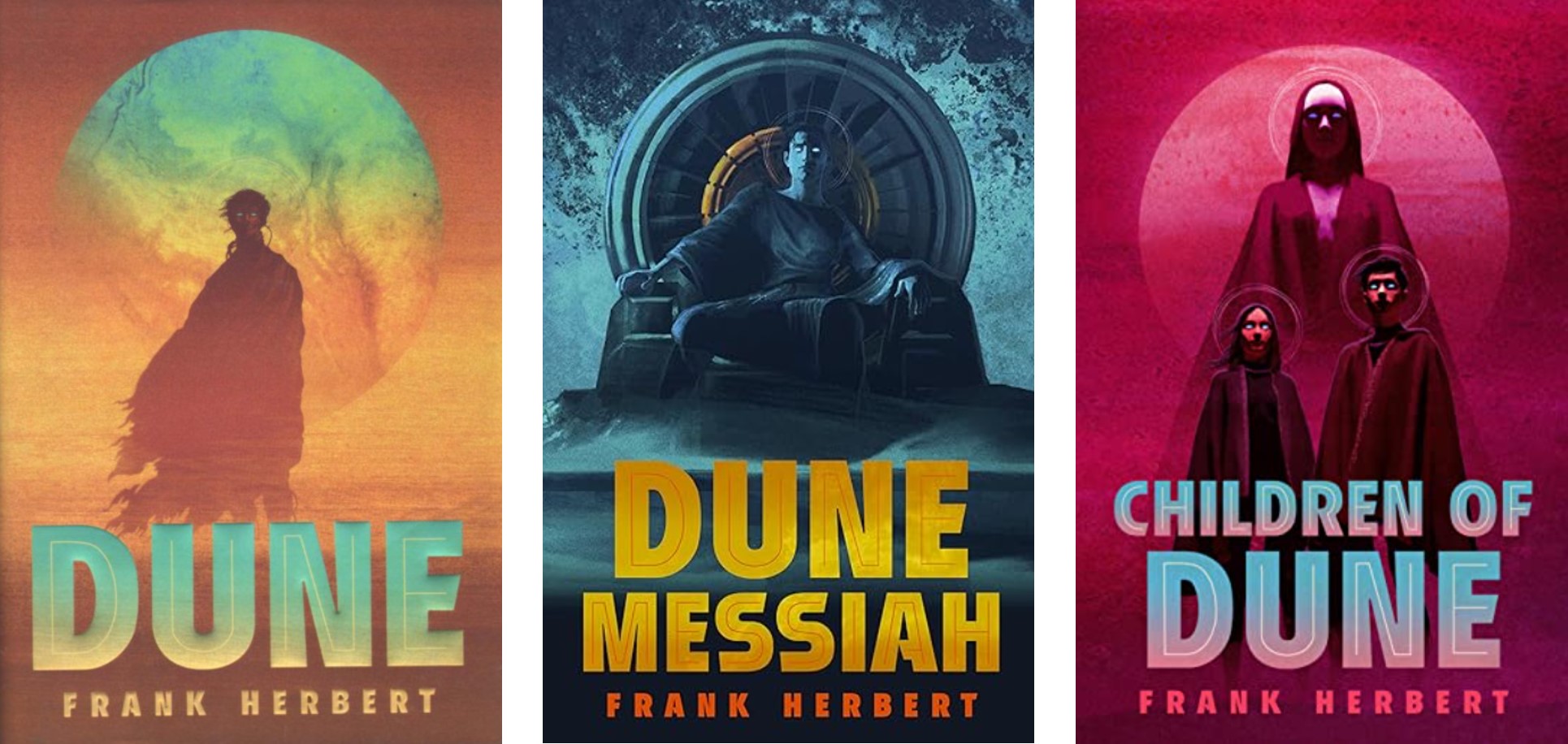
Dune Editions
In addition to the inclusion of the novel Dune in the various set editions published in the US and the UK, the first and most famous novel has been published on its own many times by many publishers. Some of these are old, some are quite collectable and many recent editions of the standalone novel have been published to very high quality. Here are many of the single volume Dune editions that are not part of a series set.
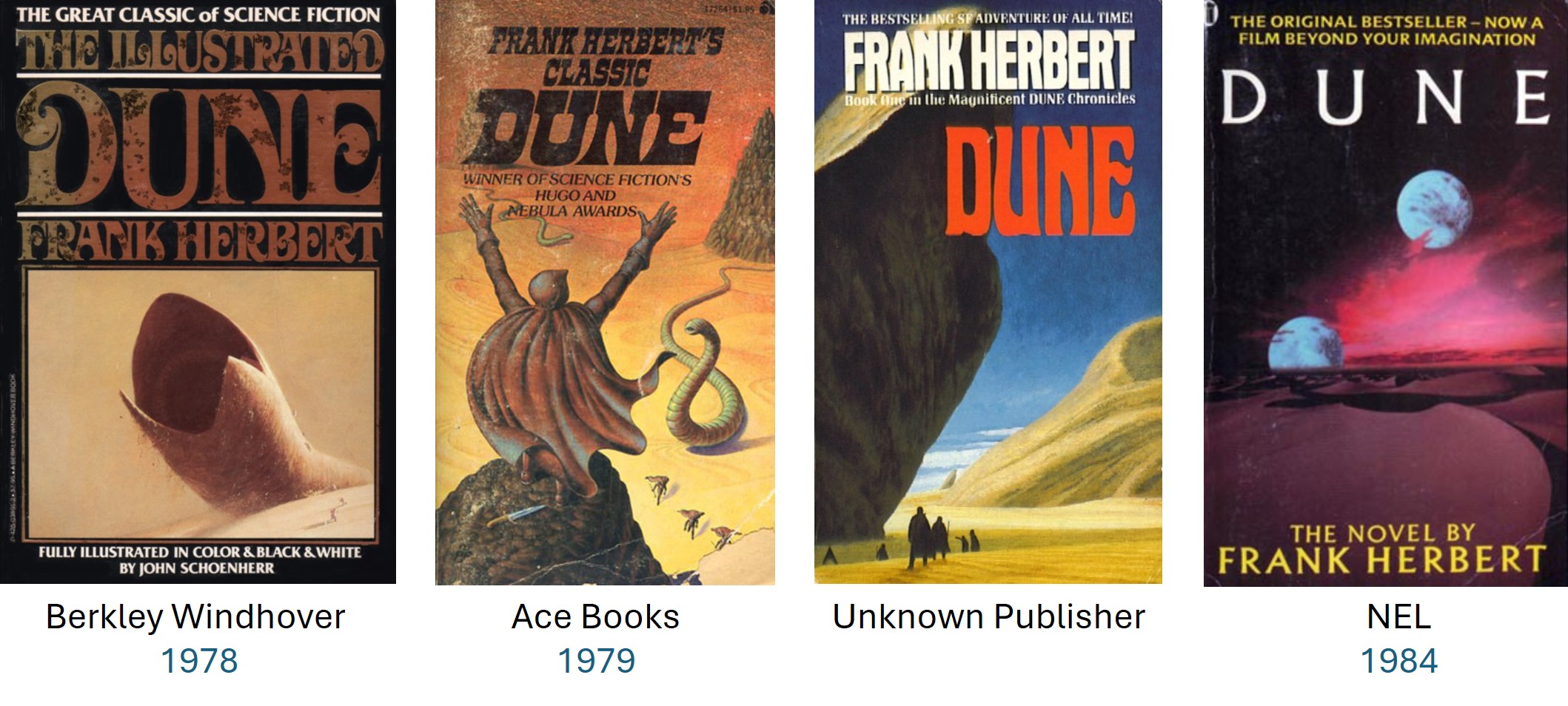

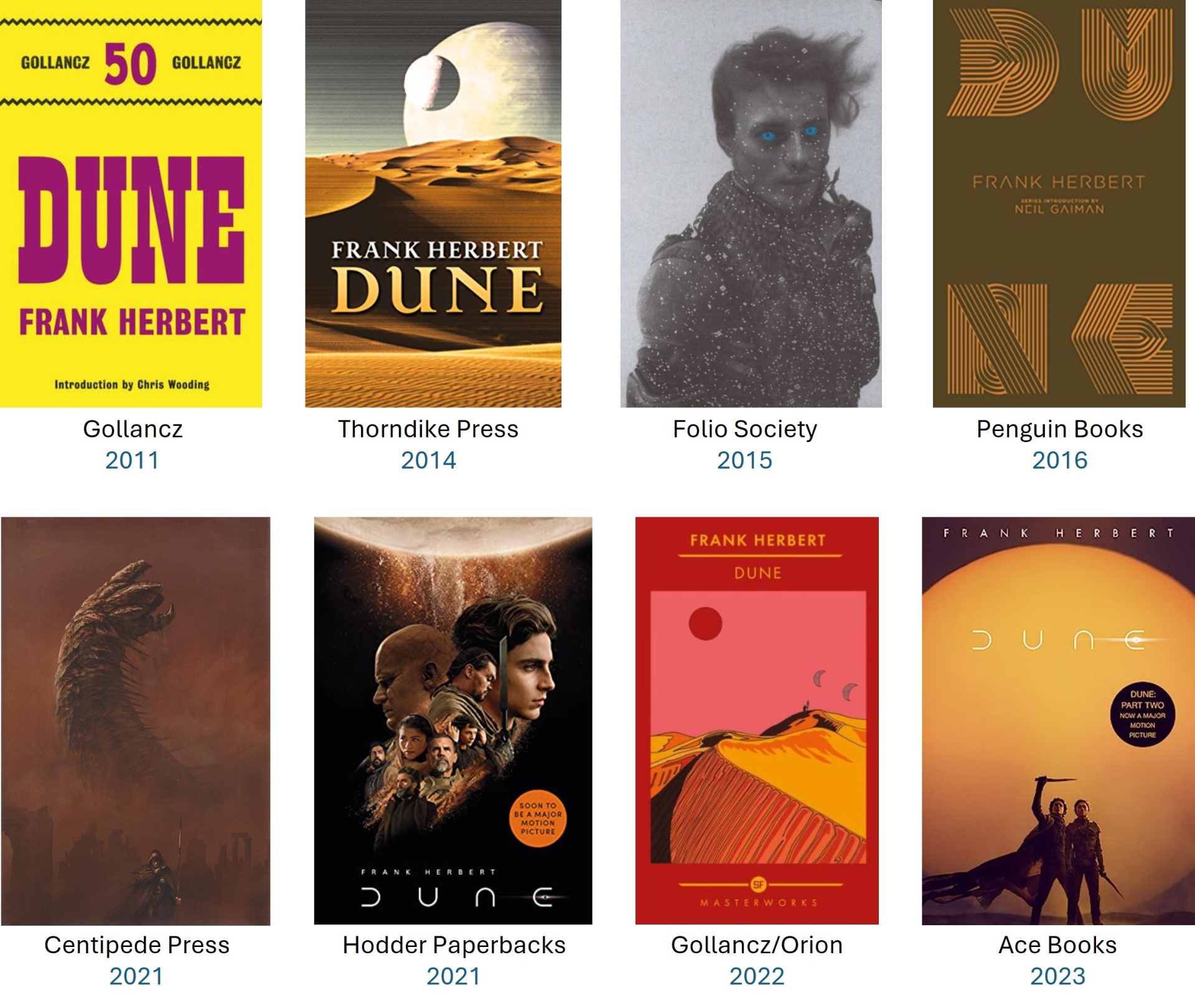
Dune Trilogy Compendium Editions
Almost all the trilogy compendiums of the books have been published in the UK, largely by Gollancz. 1984 saw two film tie-in editions, and Gollancz also collected the second 'trilogy' in 1987.
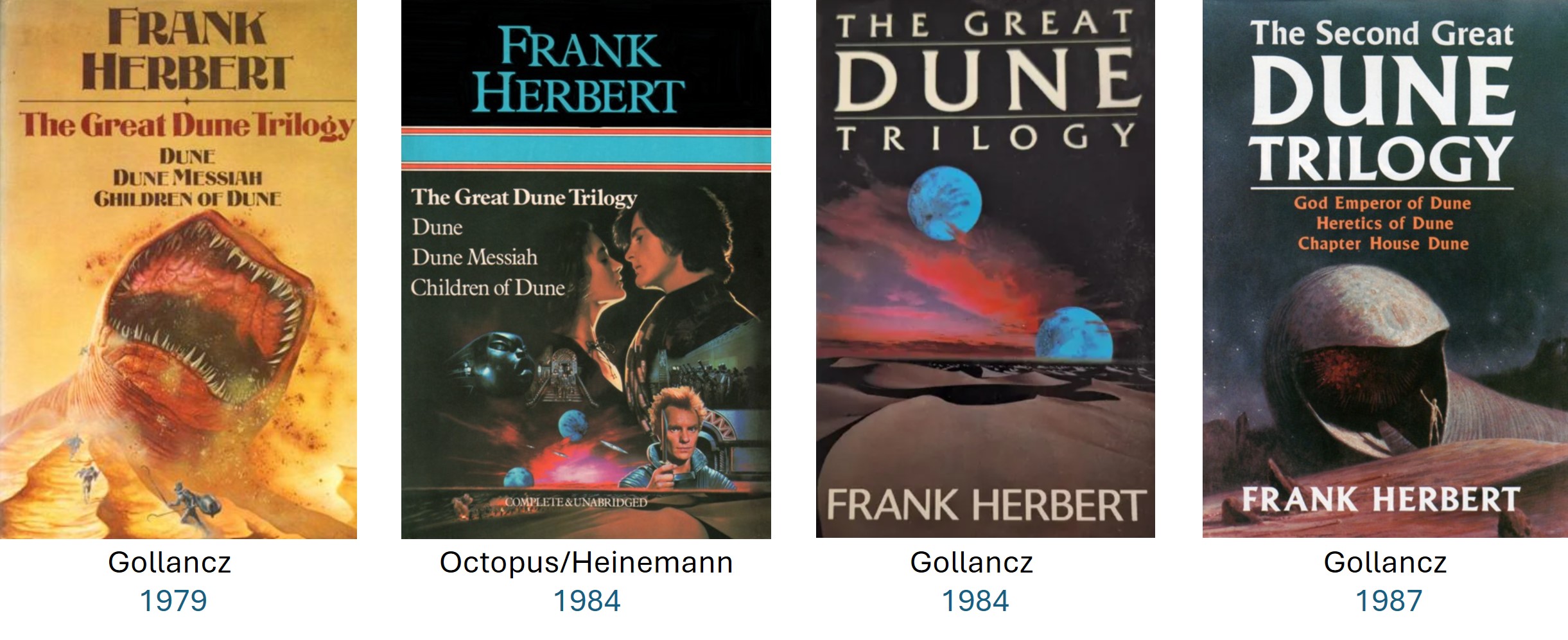
More recent trilogy compendiums (also from the UK) have been quite nicely produced - all by Gollancz again.
